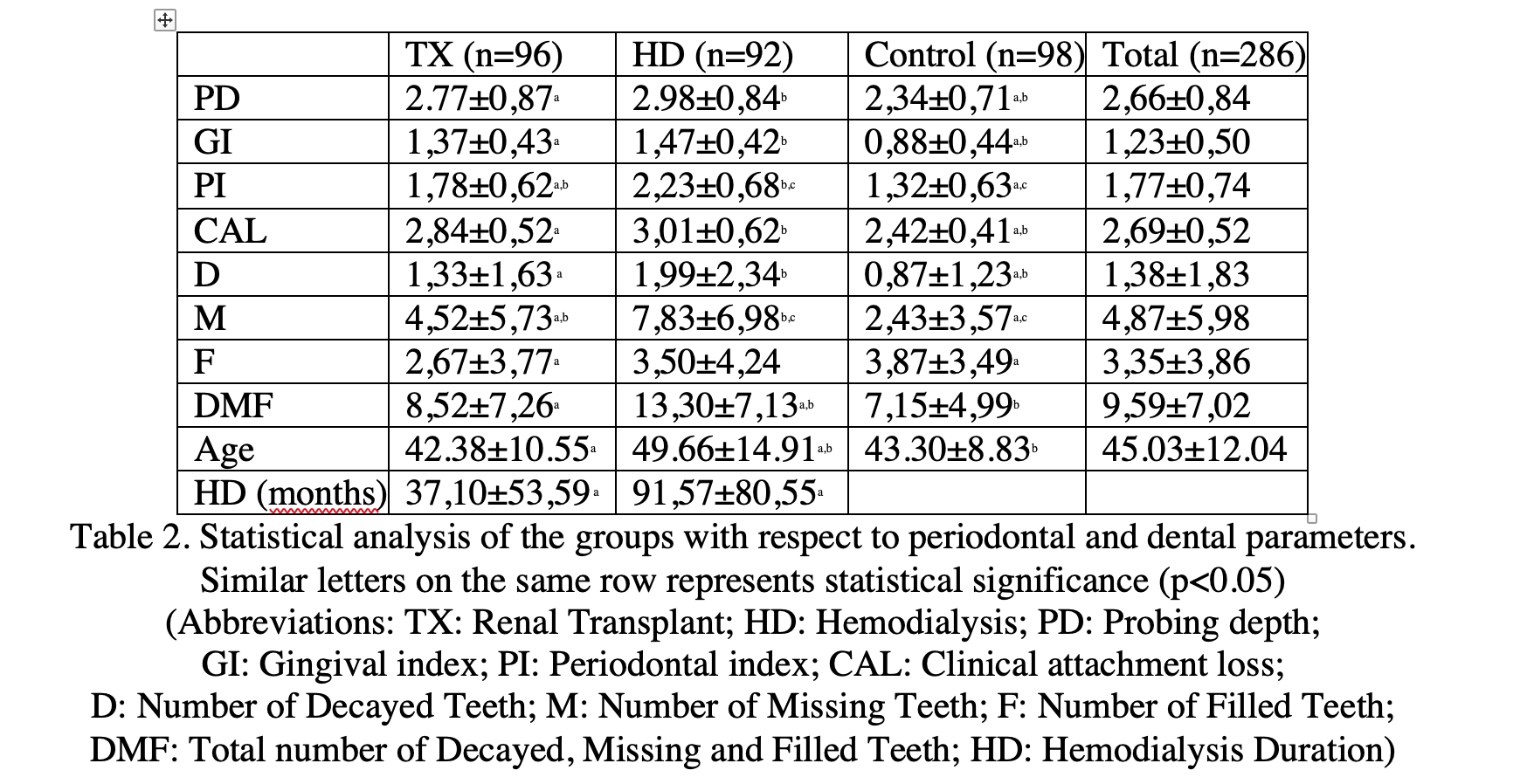Evaluation of dental and periodontal health of renal transplant and hemodialysis patients
Bahar Oduncuoglu1, Ayse Gulsahi2, Neslihan Arhun3, Turan Colak4, Mehmet A. Haberal5.
1Periodontology, Baskent University, Ankara, Turkey; 2Oral Maxillofacial Radiology, Baskent University, Ankara, Turkey; 3Restorative Dentistry, Baskent University, Ankara, Turkey; 4Nephrology, Baskent University, Ankara, Turkey; 5Transplantation, Baskent University, Ankara, Turkey
Introduction: Renal transplantation is considered to be the most efficient renal replacement therapy option of end-stage renal disease. This study aimed to evaluate the dental and periodontal health status of renal transplant and hemodialysis patients with respect to healthy control subjects.
Materials-Methods: A total of 286 patients; 96 renal transplant (TX), 92 hemodialysis (HD) and 98 healthy patients (control) were enrolled in the study (Table 1). Transplantation age data were also recorded for TX group. Probing depth (PD), clinical attachment loss (CAL), gingival index (GI) and plaque index (PI) were used to evaluate the periodontal status. Dental status was assessed with respect to the number of decayed, missing and filled teeth (DMFT).
Results: The distribution of the patients is shown in Table 1. For the periodontal health parameters, it was shown that TX patients presented similar values to hemodialysis patients in terms of PD, GI and CAL but higher values in terms of PI (p<0.05). Both TX and HD patients’ periodontal health was lower than the control group with respect to each parameter. Dental parameters presented similar results to periodontal parameters. TX and HD patients had similar D and DMF values when compared with the control group. But, HD patients had higher M values while TX patients had higher F values (p<0.05) (Table 2).
Discussion: The results of the current study were consistent with the previous literature. The periodontal disease extent and therapy needs of HD patients were higher than TX patients. Besides, the periodontal healthy condition attained after periodontal therapy could not be maintained after the transplantation. Thus, after the transplantation, the transplant patient should be well monitored and educated on oral health.
Conclusion: TX and HD patients had lower periodontal and dental health when compared to healthy subjects. In fact, HD patients exhibited worse scores than the TX subjects. Dental and periodontal treatment needs were observed to be higher in TX and HD group compared to controls.


There are no comments yet...
